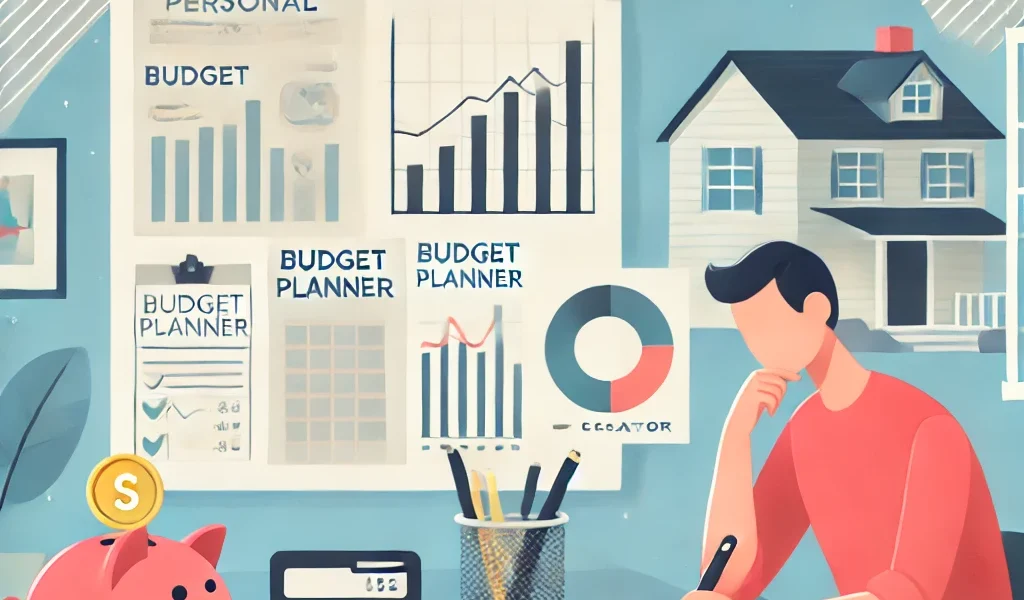Introduction
Effective financial planning is the key to long-term financial security. Whether you are looking to manage your expenses, save for the future, or invest wisely, a smart budget can provide the roadmap to financial success. Budgeting is not just about restricting expenses; it’s about making intentional choices to achieve financial goals while maintaining a comfortable lifestyle.
This guide will help you understand the fundamentals of budgeting, how to create a personalized financial plan, and ways to stay on track.
Why Smart Budgeting is Important
1. Achieving Financial Stability
Without a structured budget, it’s easy to overspend and accumulate debt. A well-planned budget ensures you live within your means, reducing financial stress and providing peace of mind.
2. Building Emergency Savings
Unexpected expenses like medical emergencies or job loss can disrupt finances. A smart budget allows you to build a reliable emergency fund, keeping you prepared for any situation.
3. Debt Reduction and Avoidance
Budgeting helps you allocate funds to pay off existing debts and avoid taking on unnecessary financial obligations in the future.
4. Achieving Financial Goals
Whether it’s buying a house, funding education, or planning for retirement, a budget helps allocate funds to achieve these goals.
Steps to Building a Smart Financial Plan
Step 1: Assess Your Current Financial Situation
Start by evaluating your current income, expenses, savings, and debts. This gives you a clear picture of where you stand financially. Track your expenses for at least a month to identify spending patterns.
Step 2: Set Clear Financial Goals
Define both short-term and long-term financial goals.
- Short-term goals (3-12 months): Paying off small debts, saving for a vacation, building an emergency fund.
- Long-term goals (3+ years): Buying a home, retirement savings, children’s education.
Step 3: Choose a Budgeting Method
Different budgeting methods work for different individuals. Here are a few popular ones:
- 50/30/20 Rule – Allocate 50% of income to necessities, 30% to wants, and 20% to savings and debt repayment.
- Zero-Based Budgeting – Assign every dollar of your income to specific expenses, savings, or investments.
- Envelope System – Withdraw cash and allocate it into envelopes for specific spending categories to avoid overspending.
- Pay-Yourself-First Budget – Prioritize savings and investments before allocating funds for other expenses.
Step 4: Track Your Income and Expenses
Use budgeting apps, spreadsheets, or pen and paper to track your expenses daily. Categorize them into fixed expenses (rent, utilities) and variable expenses (entertainment, dining out).
Step 5: Cut Unnecessary Expenses
Review your spending habits and eliminate non-essential expenses. Some easy ways to cut costs include:
- Cooking at home instead of dining out.
- Cancelling unused subscriptions.
- Shopping smarter using discounts and coupons.
- Using public transport instead of owning a second vehicle.
Step 6: Build an Emergency Fund
Set aside at least three to six months’ worth of expenses in a high-yield savings account. This fund will help cover unexpected costs without disrupting your budget.
Step 7: Pay Off Debt Strategically
- Snowball Method: Pay off the smallest debts first to build momentum.
- Avalanche Method: Pay off debts with the highest interest rates first to save money over time.
- Avoid high-interest loans and credit card debt by making timely payments.
Step 8: Invest for the Future
A good financial plan includes investing for long-term wealth growth. Consider:
- Retirement accounts (401(k), IRA)
- Stocks, bonds, mutual funds
- Real estate investments
Consult a financial advisor if needed to choose the best investment options based on your risk tolerance and financial goals.
Step 9: Automate Your Finances
Set up automatic payments for bills, savings, and investments. This reduces the chances of missing payments and helps maintain financial discipline.
Step 10: Review and Adjust Your Budget Regularly
Financial circumstances change over time. Review your budget every month and make adjustments as needed. If you receive a salary increase or a windfall, allocate it wisely towards savings and investments instead of unnecessary expenses.
Common Budgeting Mistakes to Avoid
- Not Tracking Expenses – Without tracking, it’s easy to overspend without realizing it.
- Underestimating Expenses – Always budget a little extra for variable costs.
- Ignoring Emergency Savings – Not having a safety net can lead to financial crises.
- Relying Too Much on Credit Cards – High-interest debt can quickly spiral out of control.
- Not Reviewing the Budget Regularly – A budget should evolve with changes in income and expenses.
Conclusion
Building a financial plan through smart budgeting empowers you to take control of your money, achieve financial security, and work towards long-term wealth. By following these steps, tracking expenses, and making intentional financial decisions, you can create a budget that truly works for you. Remember, budgeting is a continuous process, so keep refining your financial plan to align with your goals.
A well-planned budget is the foundation of financial freedom. Start today and pave the way for a financially secure future!




